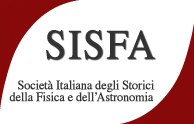Speaker
Description
The report presents, through documents and tools still preserved, the complex process that led, in the mid-1800s, to the adoption of the decimal metric system in the territories of the Este Duchy, characterized by a remarkable metrological multiplicity. The process had been started by a law of the Italian Republic in 1803 but, despite the publication of comparison tables between the new and existing measures and weights, the old measures continued to coexist alongside the new ones.
Several years after the Restoration of the ancient rulers the archiduc Francesco V of Austria Este who in 1849 sanctioned, starting from 1852, the introduction of the decimal metric system and appointed a Commission on weights and measures chaired by Stefano Marianini and Giuseppe Bianchi who were in charge of going to Paris to conduct the experiences of measure with the new archetypes that had been ordered there.
In Paris, they had made, through Jean Baptiste Biot and Victor Regnault,one kilogram sample and a precision balance from Louis Joseph Deleuil a sample meter, a dial gauge for linear measurements and a machine for dividing in a straight line by Guillaume Perreaux.
When all the equipment was received in Modena, in 1851 work began on the Metrology Cabinet, located in a room in the Palazzo Ducale adjacent to the Astronomical Observatory.
In August 1852. after the Tables of comparison were published, the Metric Workshop completed the construction of the archetypes but the entry into force of the decimal metric system was postponed to 1/1/1857 after the production of 72 samples of the new measures for each of the 72 administrations of the Estense State in the new restored rooms of the Metric Workshop, obtained seventeenth-century ducal stables.
In 1858, the Commission on Weights and Measures was dissolved and the closed metric workshop was closed: in the same year a copy of the archetypes for the measurements to be performed in the Observatory of the Roman College had been sent to Rome.

